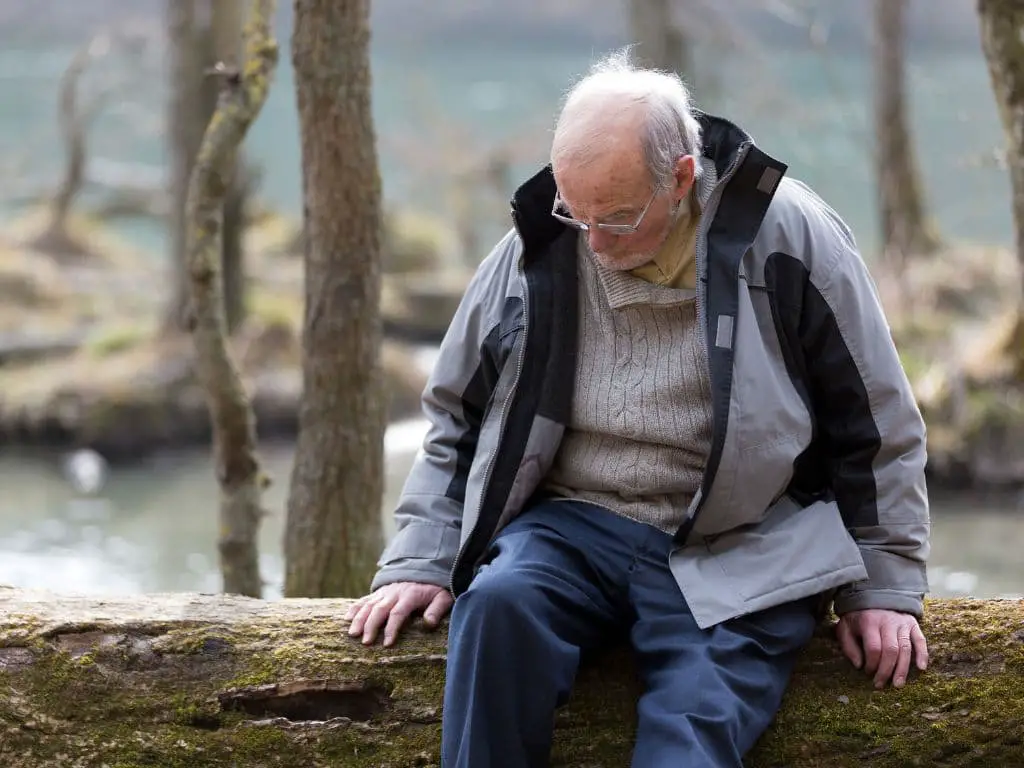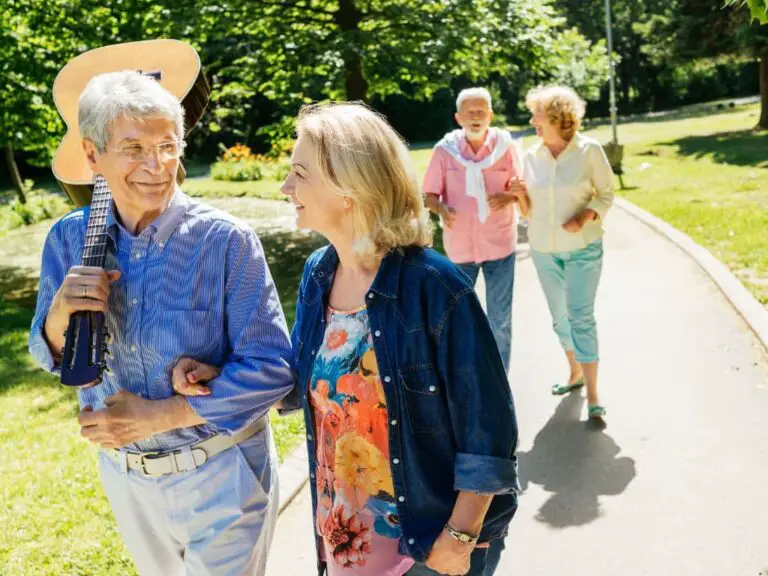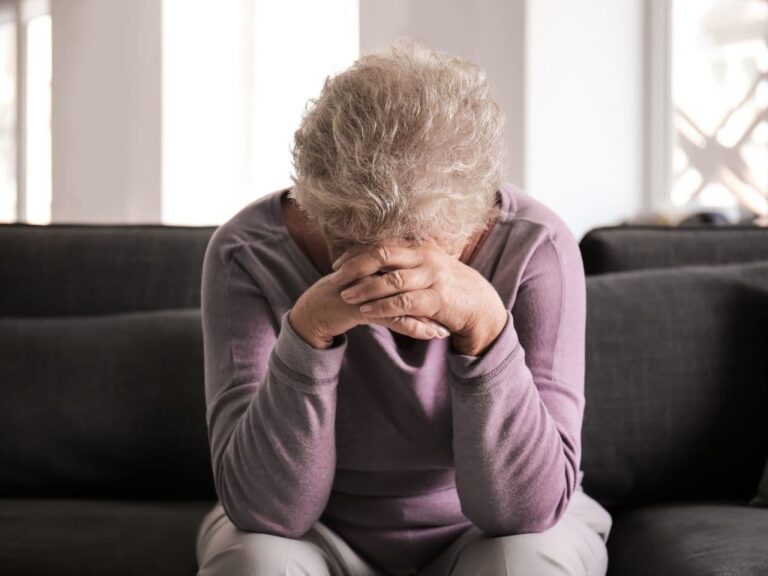Why Do Elderly People Withdraw From Life?
A growing issue facing many elderly people is the tendency to withdraw from society and loved ones, often as a result of physical or mental health declines. This withdrawal, characterized by increased isolation, loss of interest in activities, and detachment from social circles, can have serious consequences for seniors’ health and wellbeing.
Factors like depression, dementia, loss of mobility, grief and lack of social support systems can all drive the decision to withdraw. The impacts are also multifaceted, from increased risks of anxiety and mortality to general deterioration of quality of life.
Understanding why withdrawal occurs, how it manifests, and what can be done to help elderly people remain socially and physically engaged is becoming increasingly important as our population ages. This complex issue requires insights from healthcare providers, families, policymakers and communities to improve supports and care for at-risk seniors.
Elderly people often withdraw due to physical or mental health declines such as depression, dementia, or loss of mobility. Lack of social support, grief, and a reduced interest in activities can also contribute to increased isolation. This withdrawal can lead to serious health consequences and a decreased quality of life.

What Does Withdrawal Mean in the Context of Elderly People?
Withdrawal from life in elderly people typically refers to an emotional withdrawal or disconnect from others, rather than a physical withdrawal. It can manifest in a variety of ways, including decreased social interaction, loss of interest in activities, increased time spent alone, and avoiding participation in events. Where an elderly person was previously engaged and interactive, signs of withdrawal include becoming more isolated, aloof, despondent or detached from loved ones and their community. This differs from the physical sense of withdrawal which refers to physiological dependence on a substance.
Withdrawal is often a sign of underlying issues both physical and psychological that impact an elderly person’s desire or ability to maintain connections and an active lifestyle. It represents a retreat from social circles and engagement in favor of increased solitude and inactivity. This withdrawal can be mild or severe depending on the individual and underlying causes. Identifying and addressing what factors are leading to withdrawal can help reverse this condition and improve quality of life.
What Are the Signs and Symptoms of Withdrawal in Elderly People?
Some common signs and symptoms that may indicate an elderly person is withdrawing from life include:
- Decreased interest in activities, hobbies, and social interactions they previously enjoyed. They may stop participating in favorite pastimes or attending social functions as frequently.
- Avoidance of phone calls, visits, and invitations from friends, family, and neighbors. They make fewer efforts to stay connected.
- Expressions of apathy, sadness, irritability, or listlessness. Their outlook and mood may shift in a more negative direction.
- Changes in routines and habits, such as sleeping more during the daytime. Disruption of normal rhythms can indicate problems.
- Difficulty concentrating, recalling details, learning new information. Cognitive changes may accompany withdrawal.
- Deterioration in personal grooming and hygiene. A lack of interest in appearance may reflect deeper issues.
- Loss of appetite, sudden weight loss or gain. Physical health can suffer along with emotional health.
- Increasing isolation and desire to be alone. Someone withdrawing will pull back from those around them.
- Rarely leaving home and disconnected from the community. Withdrawal can lead to becoming homebound.
- Expressions of hopelessness, worthlessness, or suicidal thoughts. May indicate depression or other mental health disorders.
Any of these symptoms, especially when manifested in combination or to extremes, can signify unhealthy withdrawal in the elderly that merits concern and intervention. Checking in on elderly loved ones displaying these signs is important.
What Factors Contribute to the Withdrawal of Elderly People?
There are a number of potential factors that may lead to increased withdrawal among the elderly, including:
- Physical health problems – Chronic pain, mobility issues, frailty, loss of hearing or vision, fatigue, and illness can all make social interaction and activity more difficult.
- Cognitive decline – Dementia, Alzheimer’s disease, and general loss of cognitive functions can make it challenging for an elder to follow conversations, remember plans and engage fully in social circles.
- Mental health issues – Depression, anxiety and other conditions may decrease motivation and interest in being active and outgoing. Social isolation can also worsen these problems.
- Loss of loved ones – Coping with bereavement after losing a spouse, siblings, or friends can lead an elder to withdraw from social contacts that remind them of their grief.
- Lack of transportation options – Physical or financial limitations getting to community events and other activities outside the home contributes to isolation.
- Reduced mobility – Conditions like arthritis or frailty that make getting around more difficult can lead to withdrawal out of necessity.
- Major life changes – Adjusting to retirement, moving to a new home, or going from independent to assisted living are disruptive events.
- Lack of social support – Without friends or family nearby, loneliness tends to increase with age.
Targeting these issues through medical care, counseling, social support services and other interventions tailored to the individual’s needs can help overcome barriers to staying engaged in life.
How Does Withdrawal Affect the Quality of Life of Elderly People?
Withdrawal from life can significantly impact an elderly person’s quality of life and well-being in a number of ways:
- Increased risk of depression and anxiety – Social isolation and inactivity are strongly associated with higher rates of mood disorders in the elderly. Withdrawal exacerbates their risk factors.
- Deterioration of physical health – Lack of mobility and reduced motivation for self-care may result in loss of strength, stamina and overall fitness along with nutritional deficits.
- Decline in cognitive functions – Staying mentally, socially and physically active helps preserve cognitive health. Withdrawal has the opposite effect.
- Loneliness – Reduced social interaction leads to feelings of loneliness. Humans are social creatures by nature, but elderly people are more prone to loneliness.
- Loss of independence – Severe withdrawal behaviors can make it difficult for an elder to care for themselves, resulting in increased reliance on others.
- Higher mortality rates – Studies show social isolation significantly elevates an older person’s risk of premature death. Withdrawal is a predictor of mortality.
By supporting engagement in life and community, the negative impacts of withdrawal on quality of life can be mitigated. Professional care combined with social networks can make a big difference.
How Does Withdrawal in Elderly People Relate to Loneliness and Social Isolation?
There is a cyclical relationship between withdrawal and feelings of loneliness and isolation in the elderly. Social isolation in life tends to breed further withdrawal, while withdrawal exacerbates isolation. Key connections include:
- Withdrawal manifestations like avoiding social interactions can directly increaseIsolation. Self-isolating leads to loneliness.
- Loneliness makes an elder more inclined to withdraw further from community and loved ones. It directly causes withdrawal behaviors.
- Lack of social support and transportation options contribute to isolation which encourages withdrawal. Being homebound leads to being alone.
- The effects of cognitive decline and depression, key drivers of withdrawal, both increase with isolation. It worsens these root causes.
- Stigma around aging and mental health issues can prevent seniors from seeking support before severe withdrawal sets in, increasing isolation.
- Withdrawal from beloved activities erodes a senior’s sense of purpose, independence and self-worth, increasing loneliness.
Programs that specifically target seniors’ feelings of loneliness through increased social contact and community connection may have success combating withdrawal. Transportation assistance, senior centers and in-home visits can all play a role. Support groups to share experiences can also help address shame and stigma.
How Can Caregiving and Senior Care Help Prevent Withdrawal in Elderly People?
Quality caregiving and senior care services are essential for identifying and mitigating early signs of unhealthy withdrawal among the elderly. Preventative actions include:
- Promoting participation in group activities at senior living facilities to maintain social interaction. Shared meals, games, crafts classes and more can help reduce isolation.
- Ensuring transportation availability so seniors can access community events and activities readily. Being able to leave home prevents being homebound.
- Monitoring signs of depression, anxiety and cognitive decline that may precede withdrawal and ensuring prompt medical treatment. Early intervention is key.
- Providing mental health counseling to help cope with grief, life changes and other emotional struggles that may lead a senior to withdraw.
- Advocating for a senior to keep up relationships and roles that provide purpose, whether volunteering, family responsibilities or hobbies. Staying active and engaged is protective.
- Maintaining routines for self-care, hygiene, nutrition and sleep to sustain health and self-sufficiency even during difficult life stages. Preventing decline is crucial.
- Frequently checking in with withdrawn seniors to remind them they are valued and not alone. Regular social interaction, even brief, makes a difference.
Ongoing support services aimed at keeping elderly people mentally, physically and socially active may prevent withdrawal from ever taking hold.
What Are the Treatment Options for Withdrawal in Elderly People?
There are a variety of treatment options that can assist in addressing withdrawal in the elderly depending on the underlying causes:
- Medical care to manage pain, fatigue, illness, mobility issues and other health conditions that may be contributing to isolation. Improving physical wellness supports activity.
- Support groups to help cope with grief and loss of loved ones in a communal setting. Sharing experiences decreases loneliness.
- Counseling and psychotherapy to address mood disorders, anxiety and other mental health needs exacerbating withdrawal. Cognitive behavioral therapy is commonly used.
- Medications such as antidepressants or cognitive drugs may be prescribed in some instances to stabilize mood or cognition as part of a comprehensive treatment plan.
- Home health aides can assist isolated seniors with self-care, transportation, and social interaction around activities like meals and home-based hobbies. In-home support services maintain engagement.
- Adult day care programs allow seniors to socialize and participate in therapeutic activities in a structured setting during the day, providing regular social engagement and mental stimulation.
- Assisted living facilities provide built-in opportunities for socializing, dining communally, and access to medical care while reducing isolation. Moving to senior housing can help address withdrawal.
- Physical and occupational therapy improves mobility and capacity for independent functioning so seniors can more readily care for themselves and interact socially. Improving functionality facilitates activity.
The most effective approach combines medical, psychological and social interventions tailored to each senior’s situation. Ongoing follow-up is key to support sustained progress and participation.
How Can We Improve the Quality of Life for Elderly People Experiencing Withdrawal?
Some ways we can improve quality of life for seniors experiencing withdrawal include:
- Promoting mental health support like counseling, support groups and crisis hotlines to help cope with any conditions or emotions fueling withdrawal. Destigmatizing mental health issues is also important.
- Ensuring accessible and affordable transportation so seniors can readily attend social functions, religious services, senior centers and volunteering. Being mobile reduces isolation.
- Creating more community spaces and activities tailored to seniors such as parks, community gardens, book clubs or crafting classes to stimulate engagement.
- Educating families on maintaining connections with elderly loved ones via frequent visits, phone calls, helping with errands, etc. Strong social support systems make a difference.
- Increasing funding for high quality, affordable in-home care to assist isolated seniors with activities of daily living, meals, and companionship. Caregiving facilitates independence.
- Volunteer visiting programs where younger community members are paired with homebound seniors for regular check-ins provide socialization and purpose. Intergenerational relationships are mutually beneficial.
- Ensuring adequate financial resources for low income seniors so they can afford housing, medical care, nutritious food, transportation, and senior activity fees.
- Promoting dialogue and education on aging, grief, and mental health to reduce stigma about issues facing the elderly. More open discussion encourages support seeking.
With some creativity and commitment from healthcare systems, aging services, government agencies and communities, we can implement supports that improve seniors’ quality of life and reduce the prevalence of withdrawal.
Frequently Asked Questions
-
Why do elderly people withdraw?
Older adults may withdraw from their favorite hobbies and lose interest in living. Anhedonia is a sign of depression and could also be called withdrawal. SeniorLiving shares seven ways Seniors can help with anhedonia.
-
What is the life expectancy of an 80 year old?
In the United States, the average life expectancy for white 80-year old women is 9.1 years and white 80-year old men are 7.0 years.
-
What do you wear to assisted living?
Slippers and shoes that are non-skid can be worn easily with slippers. You will need blouses and shirts that coordinate well with several pairs of pants/skirts. To coordinate outfits, sweaters and/or fleece cardsigans can be worn.
-
Why is caring for elderly parents so hard?
The role of caregiver becomes increasingly stressful as the care requirements for parents with declining health increase. Stress levels rise when one must provide care for bathing, dressing, hygiene and continence.
-
What is the leading cause of death for older adults?
For the last two decades heart disease and cancer were the leading causes of death among 65-year-olds and over. They accounted for almost a million deaths between 2002 and 2003. A third of all older deaths were caused by heart disease. This includes heart attacks and chronic ischemic cardiovascular disease.
-
Why do elderly stop talking?
Aphasia is a disorder that affects seniors. It can cause loss of ability to understand or talk. Aphasia can be caused by many different conditions. The severity of the symptoms will vary from one person to another.
-
Can you feel when your death is near?
The person will experience a slower metabolism as they age, which can lead to increased fatigue and a greater need for sleep. Increased sleep is often accompanied by a decrease in appetite. These symptoms may be caused by a decrease in drinking and eating.
-
When should you stop caregiving?
Anger, depression, insomnia, lack of sleep or irritability, as well as signs such a avoiding your loved one are all indicators that you need to support and care for them.
-
What Makes A senior happy?
Concentrate on your abilities. Focus on the things that they are capable of doing and what they find satisfying, instead of worrying about their abilities. This makes older adults happier. A study published in The Gerontologist found that accepting age and learning to adapt to it is key to healthy aging.
-
What is the life expectancy of a 85 year old?
The average American life expectancy is six years after age 85. A 85-year old has a 75% chance of remaining alive for another 3 years. However, only 1 in 4 people will survive to 10.






